Types of Whisks
You probably reach for a whisk a good handful of times each day, but are you picking the right one for what you're doing? There are types of whisks that are specifically designed for different recipes and cooking techniques like whipping up egg whites, evenly cooking a roux, or making scone dough. Check out the most common types of whisks below to see what makes them unique and when to use them.
Shop All WhisksDifferent Types of Whisks
The following are some of the most common types of whisks used in commercial kitchens. Each whip features a unique shape and configuration designed to effectively beat and blend ingredients.
1. Piano Whisks
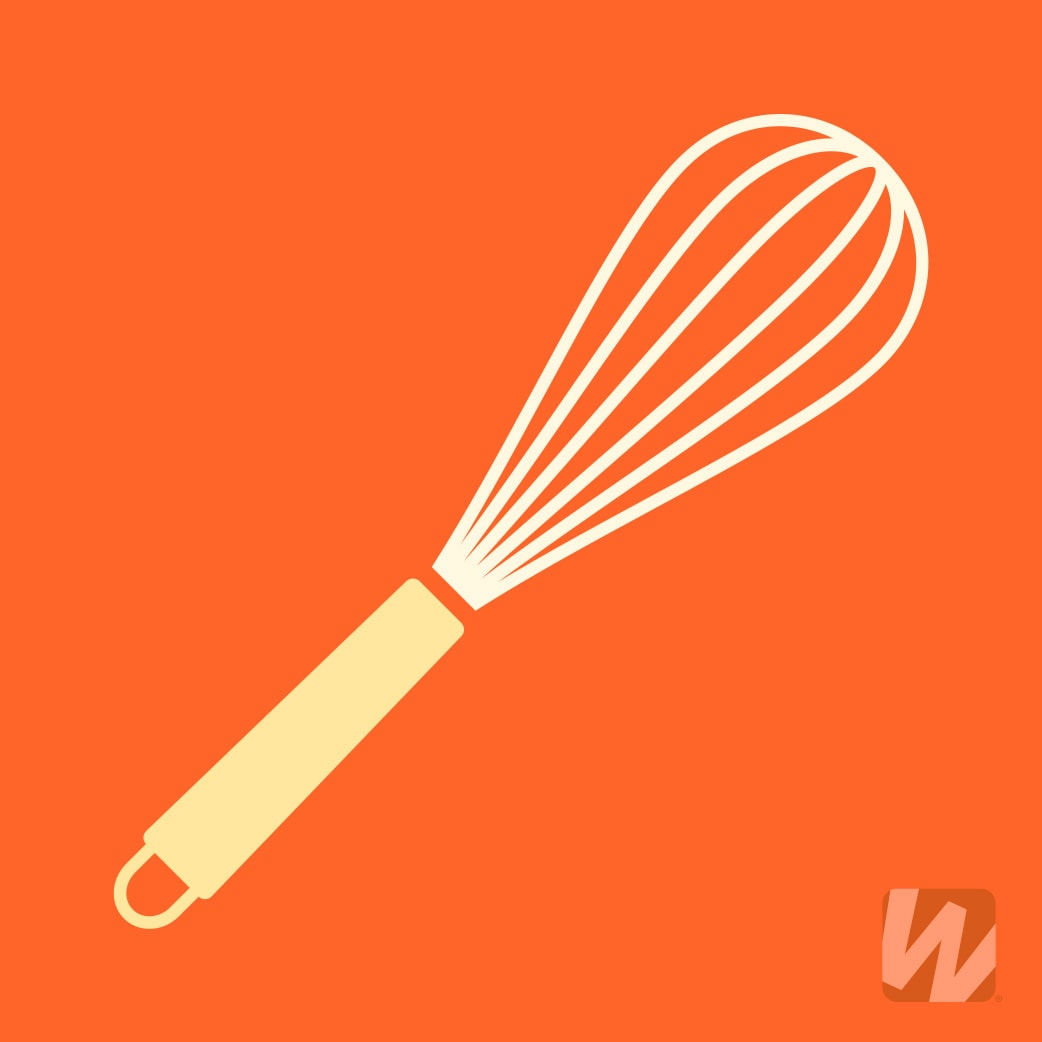
Piano whisks, sometimes known as balloon whisks, are made with thin wires and typically feature a bulbous end. These whips are considered multi-purpose or everyday whisks because they’re great for a variety of common kitchen tasks. Sometimes people use "piano whisk" and "balloon whisk" interchangeably, but many people refer to whisks with especially bulbous tips as "balloon whisks".
Because their wires tend to be springy and feature a large, rounded end, piano whisks create more movement when mixing ingredients together than compared to other types of whisks. This added motion is especially useful for introducing more air into the mixture when beating.
Uses for Piano Whisks
Here are a few common uses for piano whisks:
- Whipped cream
- Meringue
- Eggs
- Egg whites
- Lightly mixing dry ingredients as a substitute for sifting
2. French Whisks
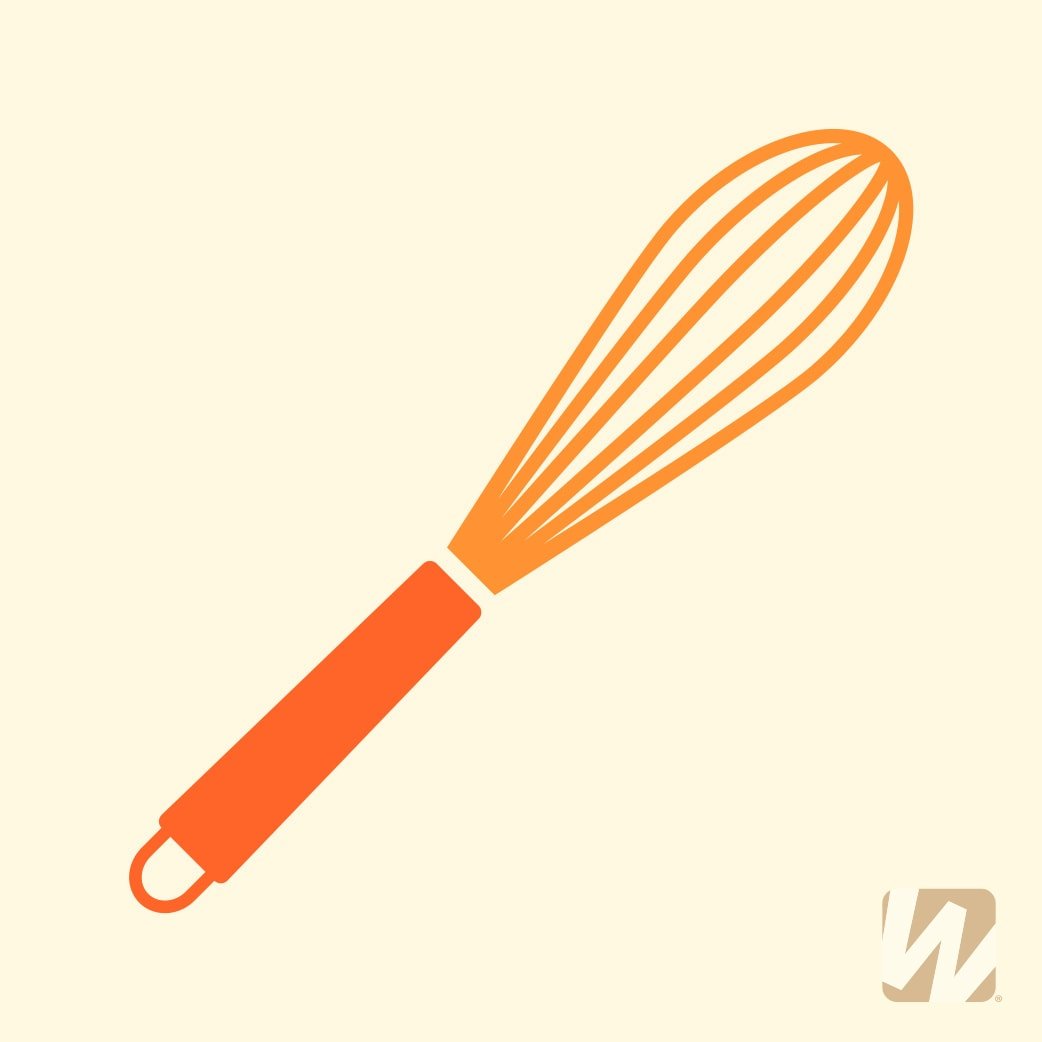
French whisks are similar to balloon whisks, but they feature a slimmer profile with slightly thicker wires. While these thicker wires are perfect for mixing together heavier ingredients, they are still meant to be flexible enough to create additional movement. Because these French whips feature a narrow end, they’re able to fit into the corners of your pots and pans to scrape up product and prevent foods from burning on the stove.
Uses for French Whisks
With their thick wires and thin frame, here are a few common uses for French whisks:
- Sauces
- Emulsions such as vinaigrettes or mayonnaise
- Batters
- Pancakes
- Custards
3. Kettle Whisks

Kettle whisks, also known as ball whisks, feature long handles and a large, cage-like ball at the end. These cage-like balls provide maximum surface area when stirring a large volume of product.
Kettle whips are used for mixing ingredients in deep kettles or stock pots. They feature long handles so you can mix ingredients while keeping your hands away from the heat source.
Uses for Kettle Whisks
Kettle whisks are ideal for use with the following:
- Soups
- Sauces
- Stocks
4. Mini Bar Whisks
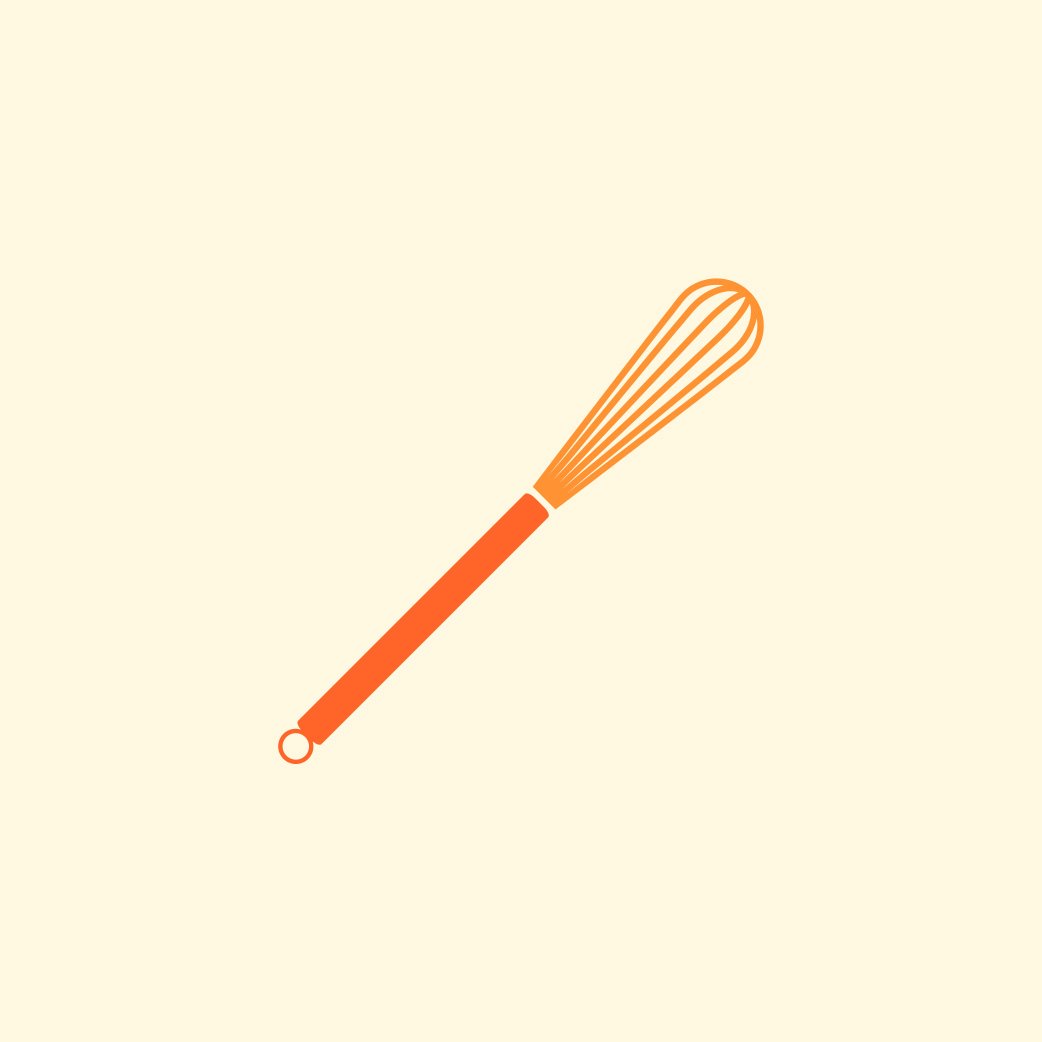
Mini bar whisks are specifically designed for whipping separated egg whites in a bar setting. Egg whites are used to craft light and airy cocktails such as the Gin Fizz, Champagne Flip, or White Lady.
The miniature size of these bar whips ensures they work in any glass size and fit compactly behind the bar. Because these bar whisks feature the same thin wires and bulbous end as piano whisks, they bring movement to your mixture and add air into your egg whites to create a fluffy, frothy final product.
Uses for Mini Bar Whisks
Mini bar whisks are ideal for use with the following:
- Whipping egg whites for cocktails
- Stirring and mixing drinks
5. Conical Whisks

Conical whisks feature thin wires formed into an elongated shape with a wider middle and narrow end. This distinct shape, which resembles a diamond, is designed to reach ingredients caught in the corner of your pots or pans. Plus, with their stiff construction, these conical whisks can be used in place of spatulas or scrapers to effectively incorporate all ingredients into your mix.
Uses for Conical Whisks
Conical whisks are ideal for use with the following:
- Sauces
- Custards
- Gravy
6. Flat Whisks
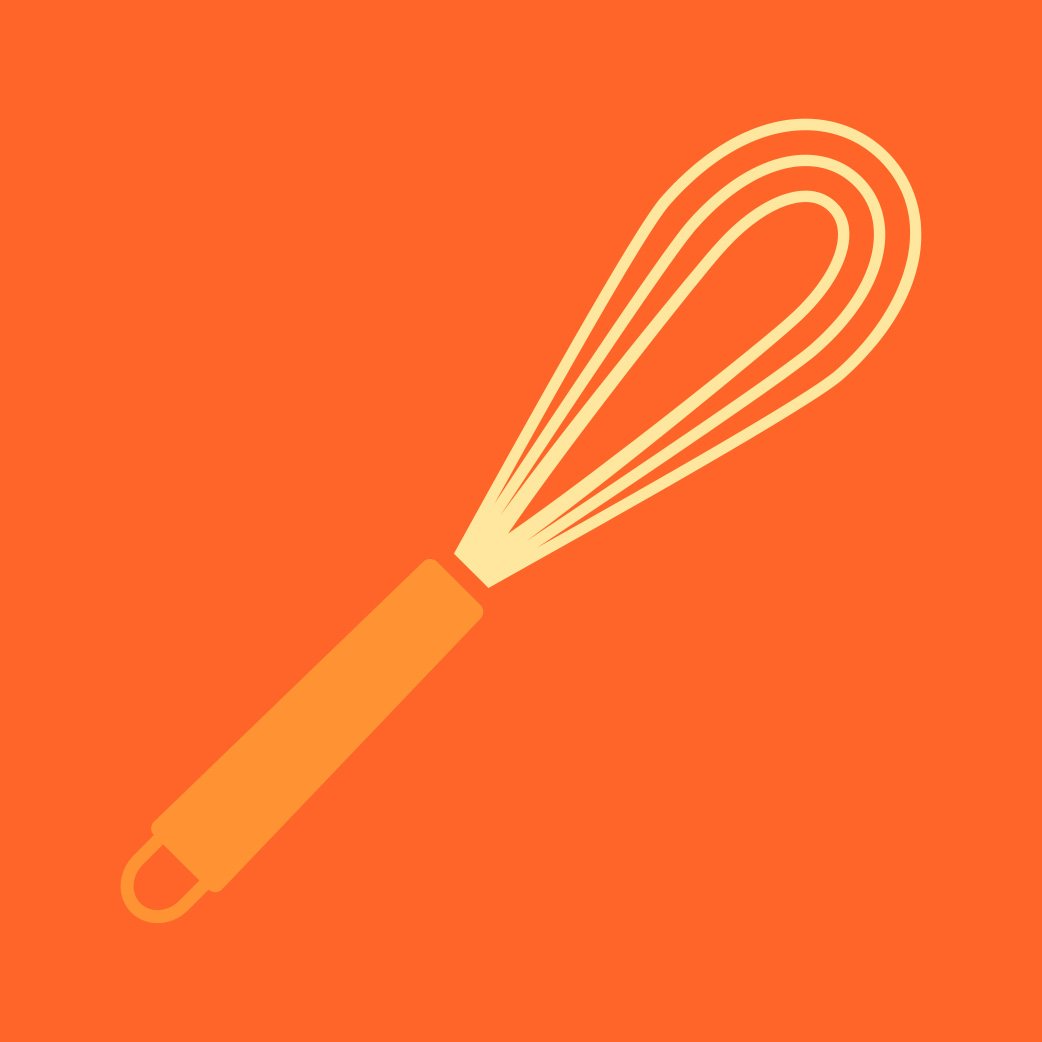
Flat whisks, also known as roux whisks, feature looped wires, typically four, in a flattened ballooned shape. These whisks are designed to be used with shallow pans to reach the optimal angle when mixing.
The lower the handle is to the pan, the flatter the whisk will lay, and the more surface area can be covered. The flat wires allow the user to scrape up product in the pan and effectively combine ingredients. This is especially beneficial when cooking a roux for a mother sauce.
Uses for Flat Whisks
Flat whisks are ideal for use with the following:
- Gravy
- Roux
- Sauces in shallow pans
- Removing poached eggs from water
- Substitutes as a fish spatula when removing fish from liquid
7. Spiral Whisks

Spiral whisks are composed of a singular wire loop wrapped in tight coils. Because the head of this whisk is placed at an angle, it is meant to always be in contact with the bottom of your pan during the mixing process. This allows the whisk to catch all ingredients and prevents burning.
As the angled head makes contact with the bottom of the pan, the smaller coils work to break up clumps of dry ingredients for a smoother final product. Because of their flat, compact construction, spiral whips are also ideal for use in small bowls where balloon or French whisks may be too bulky.
Uses for Spiral Whisks
Spiral whisks can be used for a number of mixing needs including:
- Gravy
- Sauces
- Vinaigrette
- Salad dressings
- Roux
8. Dough Whisks

Also referred to as Danish dough whisks, the flat profile of these dough whisks features an outer circle and an inner oval with a small loop. These dough whisks are perfect for bakeries, restaurants, or caterers producing housemade bread and batters.
Dough whisks are, as their name suggests, perfect for handling tough doughs or batters without overworking the ingredients. Unlike wooden spoons, the thin wires are perfect for swiftly cutting into your dough and scraping away flour pockets for a smooth and consistent mixture.
Uses for Dough Whisks
Use a dough whisk to create decadent desserts or freshly baked bread including:
- Brownies
- Muffins
- Pancakes
- Waffles
- No-knead bread
- Scones
- Irish soda bread
What Is a Whisk For?
Whisks, or cooking whips, are cooking utensils that feature a narrow handle on one end and wire loops joined together at the other. The configuration and thickness of the loops vary depending on the type of whisk you use. Whisks are used to either add air into a mixture or thoroughly blend ingredients together.
What Is the Difference between Beating and Mixing?
Mixing involves simply combining two or more ingredients together while beating is meant to both combine ingredients and add air to the mixture. While mixing can be done with any utensil such as a fork or wooden spoon, beating is best achieved with a whisk or electric mixers.
Can Whisks Be Used with Nonstick Cookware?
It is never recommended to use metal utensils on nonstick cookware. Instead, opt for whisks with a silicone coating or ones made of other materials including wood, rubber, or plastic.
Types of Whisks Infographic
To compare and contrast more easily, check out our types of whisks chart below.
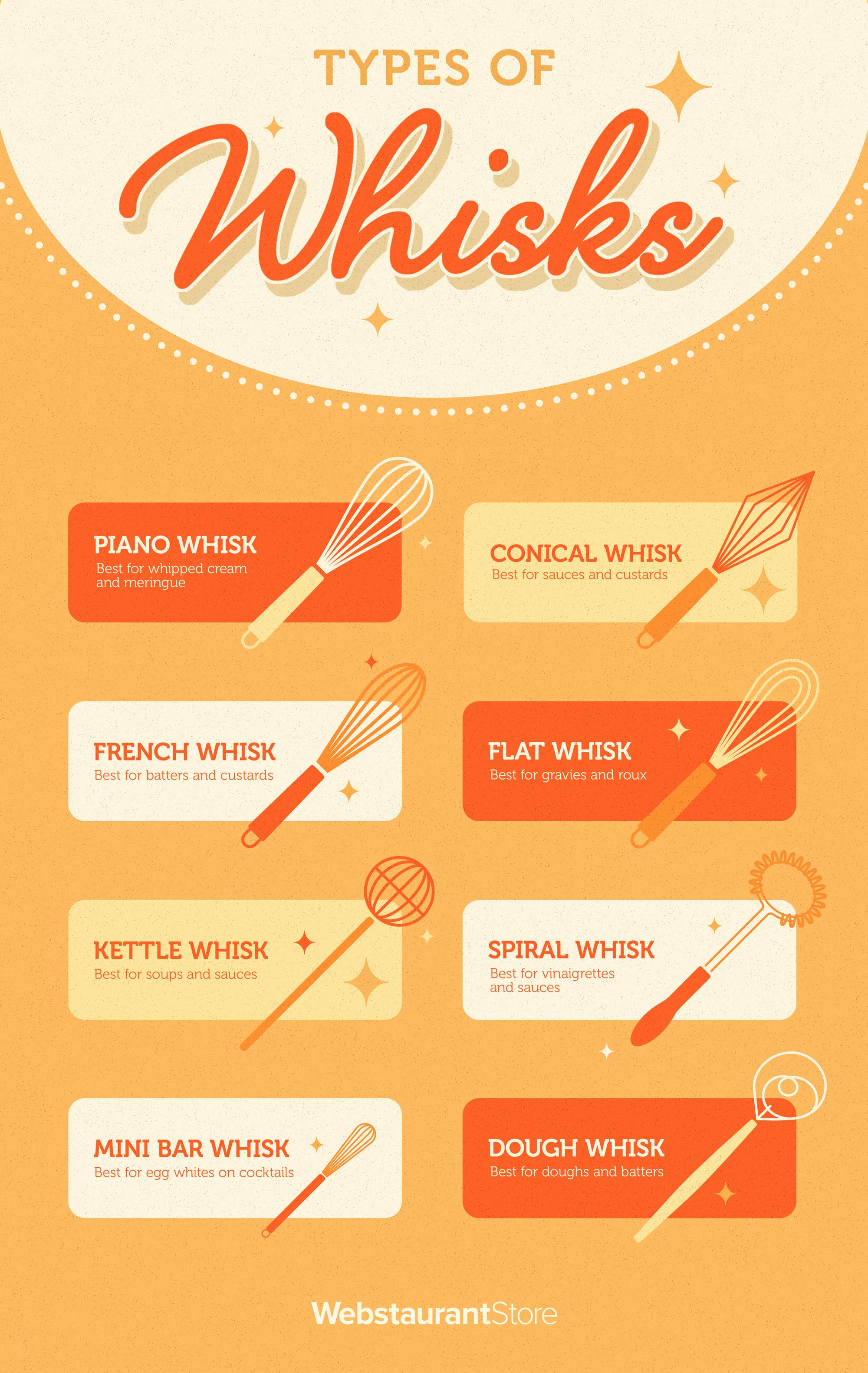
Every commercial kitchen should have the right whisk on hand to handle different cooking tasks. Whether you’re creating a roux to thicken crab mac and cheese or topping a wedding cake with a flavored buttercream, it’s important you use the right whisk for the job. Having the perfect tool in your kitchen can save time and labor costs while producing a final product you can be proud of.



